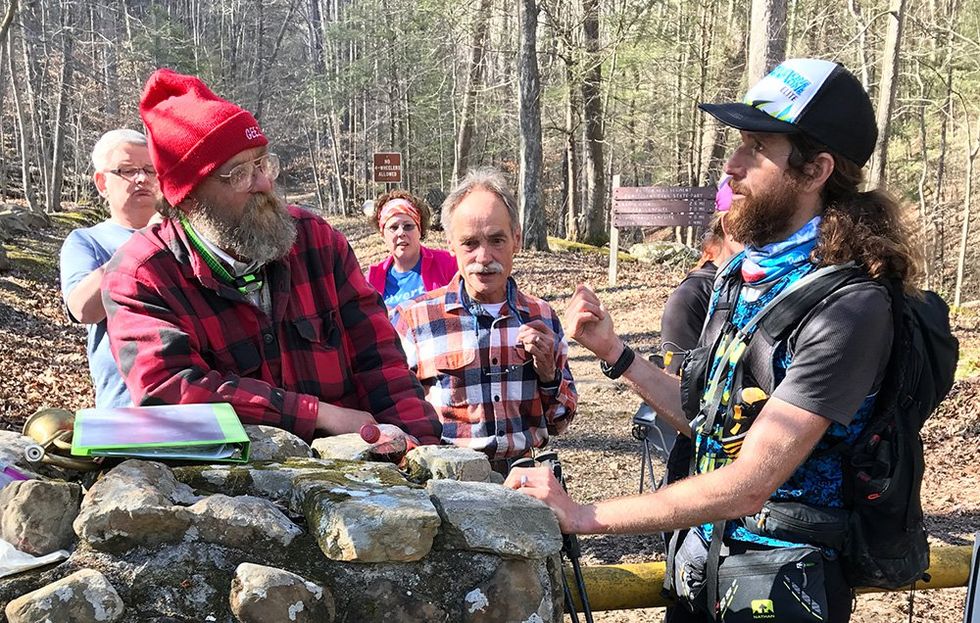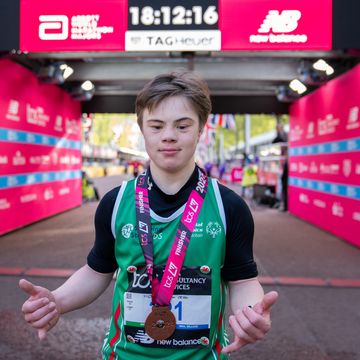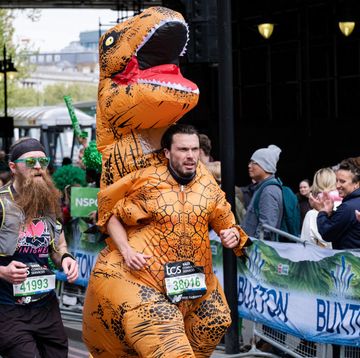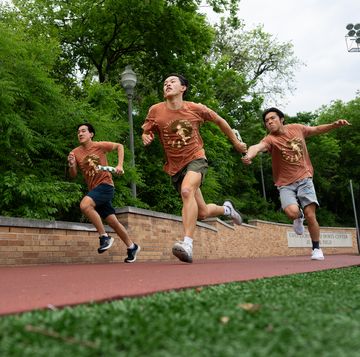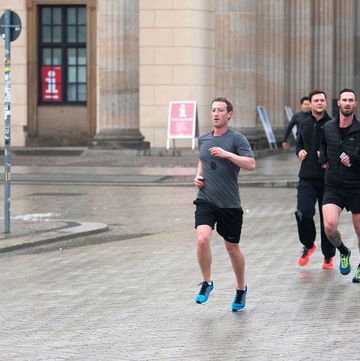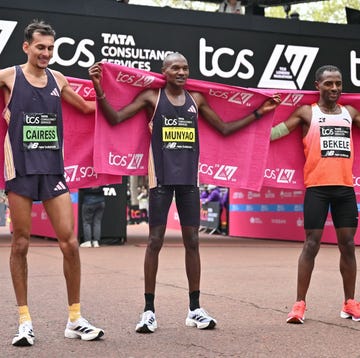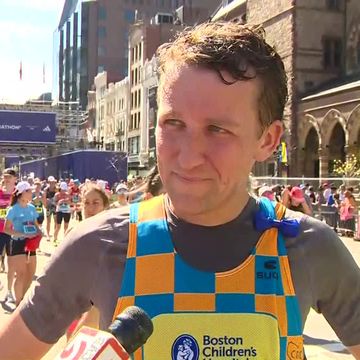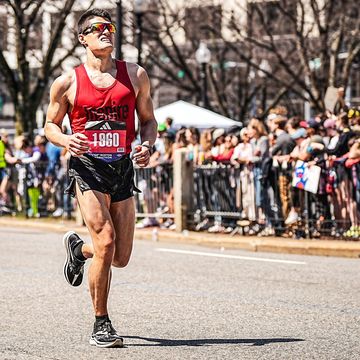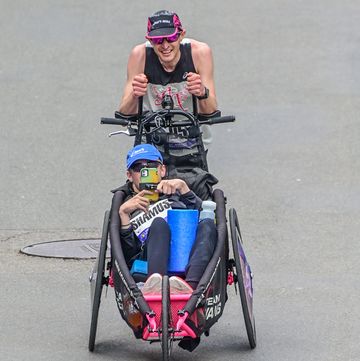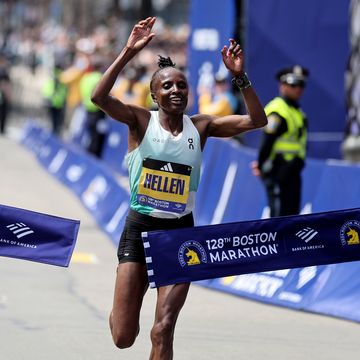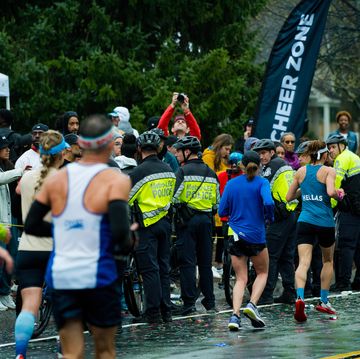With the blowing of a conch shell at 12:42 a.m. on Saturday morning, 40 participants had one hour to prepare for what many consider the toughest endurance race on the planet—the Barkley Marathons.
The full course, which consists of five 20-plus-mile loops within Frozen Head State Park in Tennessee, lived up to its brutal billing as only two people had a chance at completing the fifth loop on Monday.
Only one person tamed the beast.
In his third attempt at Barkley, John Kelly, from Washington D.C., finished the five loops in about 59 hours and 30 minutes on Monday, just under the race’s 60-hour cutoff, according to initial reports on Twitter. He bested Gary Robbins, an accomplished ultrarunner from North Vancouver, British Columbia. Robbins, 40, had to do the fifth loop in the opposite direction from Kelly after the two stuck together for the first four loops. He was unable to finish before the cutoff at 1:42 p.m. EDT.
Canadian Running Magazine was at the Barkley all weekend covering the race and Robbins. They caught his dramatic run to the finish, where he came in only six seconds past the cutoff.
Very few runners have completed the race since it began in 1986—Kelly, 32, became just the 15th individual. In 2015, nobody finished.
According to reports, 24 of the 40 competitors started the second loop of the Barkley. As often happens, the field narrowed from there. Seven made it onto loop three, with only Kelly and Robbins making the 36-hour cutoff to continue onward.
For years, the Barkley was run largely under the radar, but it gained popularity by word of mouth and through a documentary released last year, The Race That Eats Its Young. There’s no official website with information. Would-be runners have to figure out how to get in touch with Race Director Gary Cantrell to submit an application, and he ultimately selects the 40 individuals for each year’s race.
RUNNER’S WORLD SELECTS: What It's Really Like to Run Barkley
Barkley is as much mental as it is physical. The five loops of the course are full of punishing ascents (about 60,000 feet) and descents that often force you to bushwhack off trail. Each loop must be done in 12 hours to even attempt all five loops, unless you’re attempting the “Fun Run”—that’s three loops with a time limit of 13 hours, 20 minutes for each loop (40 hours total).
Four participants successfully completed the Fun Run this year—Sean Ramey, Johan Steene, Rob Youngren and Erik Storheim.
There are no real aid stations or markers; racers must follow a map provided the night before the race to reach books placed on the course, tearing out pages that correspond to their bib number to prove they followed some kind of accurate route. Usually, the first two loops—if completed—are run in one direction and reversed on loops three and four. The person in the lead at the start of loop five can choose which direction he or she will go. To throw competitors off even further, Cantrell had all competitors reverse their direction after the first loop.
Kelly, a triathlete and ultrarunner from Maryland, completed four loops in 2016 and started a fifth. Because of exhaustion, he took a brief nap a few hundred yards up the trail after starting the fifth loop last year, and returned a few hours later after taking a page from book one. He built from that experience to make himself only the 15th individual to complete all five loops this year.
PODCAST: The 2016 Barkley Marathons
A loop is at least 20 miles, though competitors say it's several more—and it certainly becomes longer if you venture off course and have to find your way back.
That’s what happened to Michael Wardian, the acclaimed ultramarathoner who this year ran seven marathons on seven continents in seven days—all in under three hours. Wardian, 42, could only muster one loop in about 15 hours during his first attempt at the Barkley.
He told Runner’s World by phone on Monday that after sticking with a few leaders at the very beginning of the race and obtaining a page from book one, he was dropped after the first huge descent and lost his bearings.
“It’s not like a regular race where you go off course, you can go back to where you got off course and figure out where you need to go,” Wardian said. “But there’s no course to go back to. And the people behind you don’t necessarily take the same path. So I just lost three and a half hours.”
As the window closed for Wardian to continue onto a second loop and he was still not back at Big Cove Campground in Frozen Head State Park, the social media hashtag #findmikewardian started. With a group of other lost souls, he strolled back to the yellow gate, which is the race’s start and finish line, at the camp about 15 hours after he started. (See more of the best social media items from Barkley here.)
Still, Wardian said the chance to do Barkley, what he called an “awesome treasure hunt,” was something he’s always wanted to attempt. And the lure to do better has him excited to try again should Cantrell have him back.
“I was hoping to still be ‘out there,’ but I did learn a lot about how the race works and what’s involved,” Wardian said. “I hope that bodes well for the future.”

Brian has spent more than a decade focused on creating compelling news, health, and fitness content—with a particular interest on enthusiast activities like running and cycling. He’s coordinated coverage of major events like the Boston Marathon, New York City Marathon, and Tour de France, with an eye toward both the professional race and the engaging stories readers love.
